The Haunted Mansion: A Halloween Re-View
I love spooky, Halloween fun, type films, especially those with ghosts and haunted houses. I watch them all year long, but there’s something special about watching them in October. I’m not keen on gory, dead teenagers, blood-fest flicks. There’s no amount of money in the world that would entice me to watch the Saw franchise, no matter how well written, acted, and edited. I’m not putting them down; they’re just not for me. Which means that come October, I’m more likely to look to Disney than Netflix for viewing ideas.
I recently re-watched The Haunted Mansion. My only previous viewing was when it came out in theaters in 2003.
Promotional copy for the movie says,
Here’s the fright-filled comedy adventure loaded with hair-raising laughs and eye-popping special effects! Eddie Murphy stars as a real estate agent whose family comes face-to-face with 999 grim, grinning ghosts in the creepy old Gracey Manor!
I don’t know if there are actually 999 ghosts in the film, but there are a lot. They hit the whole range of emotions, including the silly barbershop quartet singing graveyard busts, the wise-cracking Jennifer Tilly who plays the psychic trapped inside her own magic ball, and the briefly-scary zombies in the family crypt, to name just a few.
This seems to have all the classic elements of a haunted mansion, whether you’re talking Scooby Doo cartoons or the vampire soap opera, Dark Shadows. The mansion comes with a vast formal dining room lit by dozens of candelabras and a two story library, complete with a bust that triggers a sliding wall panel. That leads to a maze of secret tunnels, one of which, of course, ends behind a giant portrait, with removable eyes for spying, that exits into a different wing in the house. There’s a clock that strikes 13, a treasure-filled attic, and a vast private cemetery with a big spooky crypt. There’s an ominous butler (played by Terence Stamp), a skeleton horse, and, of course, an ancient curse. It all gives mildly-spooky Halloween chills without delving into actual terror or intense horror. It draws heavily on the favorite elements of the Disney theme park attractions.
I loved everything about this film except the acting of the husband-and-wife real-estate agents Jim and Sara Evers, played by Eddie Murphy and Marsha Thomason. Murphy hit the obnoxious salesman persona too hard and too often. Thomason was a strong foil for Murphy before they got to the haunted mansion, and then became far too docile and doe-eyed for the rest of the movie.
That does not mean there wasn’t some fine acting in the film. The sassy brave daughter and plucky but scared son, played by Ariel Alexandria Davis and Marc John Jefferies were perfect. Wallace Shawn, of Princess Bride fame, also blusters beautifully in the film.
Eddie Murphy, Wallace Shawn, Dina Waters and Jennifer Tilly in The Haunted Mansion
The film was mostly panned when it came out, and I was reminded of how hard it is to incorporate top tier stand up comics into a movie with a plot. (Good Morning Vietnam, anyone?) The Haunted Mansion would have been much improved with some judicious editing in the first half hour of the film.
The first four minutes are filled with the intriguing historic back story, complete with a masquerade ball, two deaths, and wonderfully atmospheric opening credits. The eight minutes after that — where we see Murphy excel at being a high-pressured real estate agent but fail at being a decent husband and father — could easily be cut with those details established in quick conversation during the family car ride. The next ten minutes could be tightened to run half that time. When the butler announces that a heavy storm has flooded the roads and the family will have to stay the night at the mansion, then shows them to their rooms, the film starts to settle into a good pace.
Set in the Louisiana bayous, it was refreshing to see a well-to-do black family portrayed by four black actors in an otherwise very white cast. Too often in this sort of movie, there’s a token black dude who is usually the first to be killed. Other than bucking that tired trend, racial issues are mostly ignored in the film except in two very subtle ways.
The simplest is that the barbershop quartet sings a song with the word “Dixie” in it. Dixie is a coded word that venerates the antebellum south with white plantation owners and a slew of slaves to work it. The song snippet they sing did not need to mention Dixie for the plot of the movie. It’s clearly there to give a nod to the racial history of the South and a subtle acknowledgment that the mansion in the film was obviously built by slaves and owned by a rich white family who gained their wealth on the backs of their slaves.
The second instance is even more subtle for white audience members. The ghost of the mansion is that of a white man who fell in love with a woman “not of the same station”. The lovers plot to run away together, but the woman is killed and the man is told she committed suicide. He hangs himself in his grief. (The image of him hanging from a cross beam and the scary zombies in the crypt are why this movie earned a PG rating.) A ghost leads the kids to the attic where they find a portrait of the woman who looks just like Sara Evers. Sara is black. The portrait is tinted in a way to muddle the issue.
Louisiana and black history buffs are likely to realize that the original woman must have been a quadroon. Quadroons were mixed race with one-quarter African blood. They were free women of color who comprised a courtesan-class said to be the most beautiful and charming women in the world. Young white men of means often made a “left-handed” marriage with a quadroon while young, before entering into an arranged marriage that served the financial interests of their families when they were in their thirties and forties. If you happen to know about quadroon history, it’s obvious that the young man wanted to run away from the family business-marriage obligations and, instead, spend his life with his love match, a mixed-race woman.
But as quadroon history is seldom taught to white folks, especially those who don’t live in Louisiana, the whole sub-plot is likely to be missed. For those who do know about it, it’s a good chance for parents to talk to their tweens and teens about American slavery.
But it’s odd that not a single line of dialogue by the Evers family ever acknowledges or comments on these things. Before you say that’s too heavy and dark for a film mostly aimed at tweens and teenagers, I’ve got to say that it makes a lot more sense to incorporate that, and cut the nasty line Murphy throws at his wife about the diamond watch he bought to buy off her anger after he missed their anniversary dinner. That felt out of place and out of tone for the movie, where a line about the slave-built house, perhaps uttered by the sassy daughter, would have made perfect sense.
For the younger kids, the film offers an Easter egg hunt in the form of five hidden Mickeys — the image of the face or full body of Mickey Mouse scattered throughout the film.
Setting aside the overly-long, jarring tone during the establishment of the Ever’s family before they visit the haunted mansion, the rest of the movie is a delightful, family-friendly spooky, funny, haunted house film. It would be completely appropriate to turn off the living room lights and hold flashlights under your chin while making ghostly woo-oooo sounds to scare the kids. Or yourself, if you’re a kid who refuses to grow up.
Released in 2003. Rated PG. Run time 1h 39m. Available for streaming on Disney+.
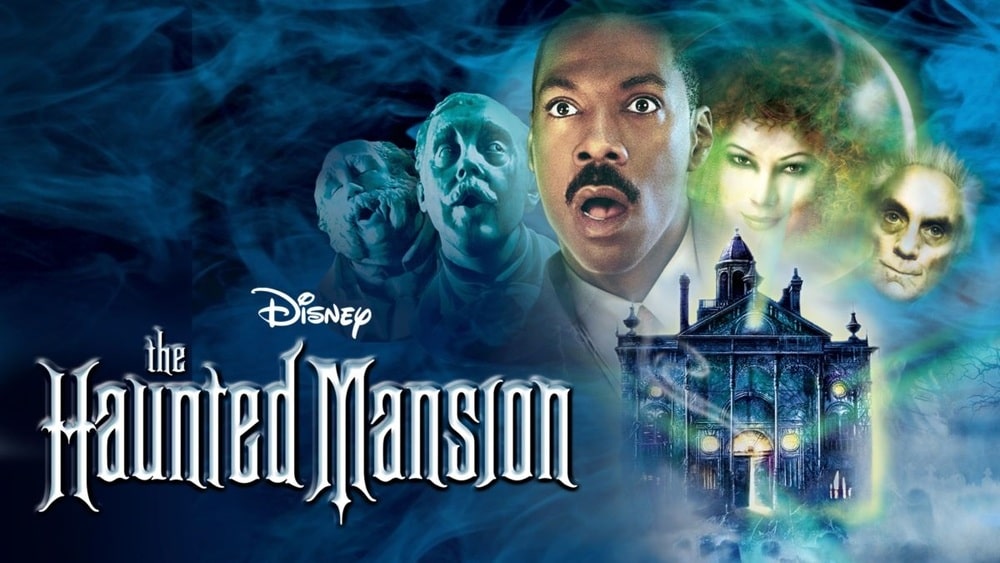
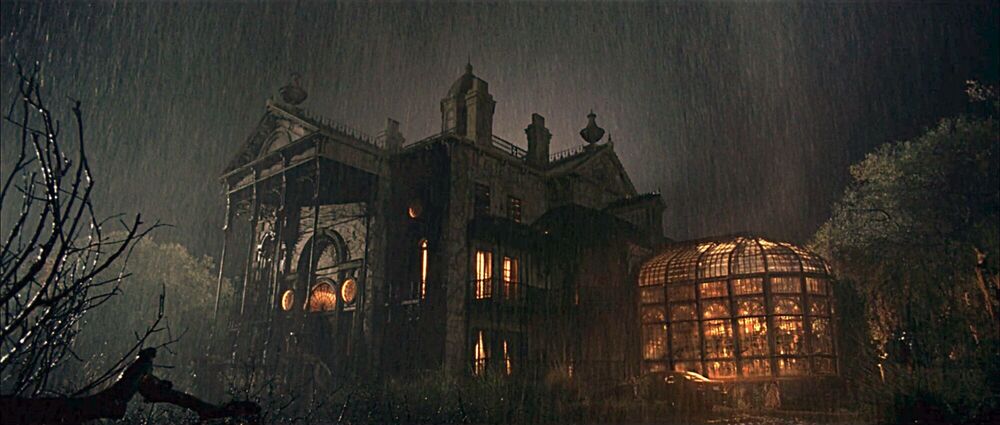
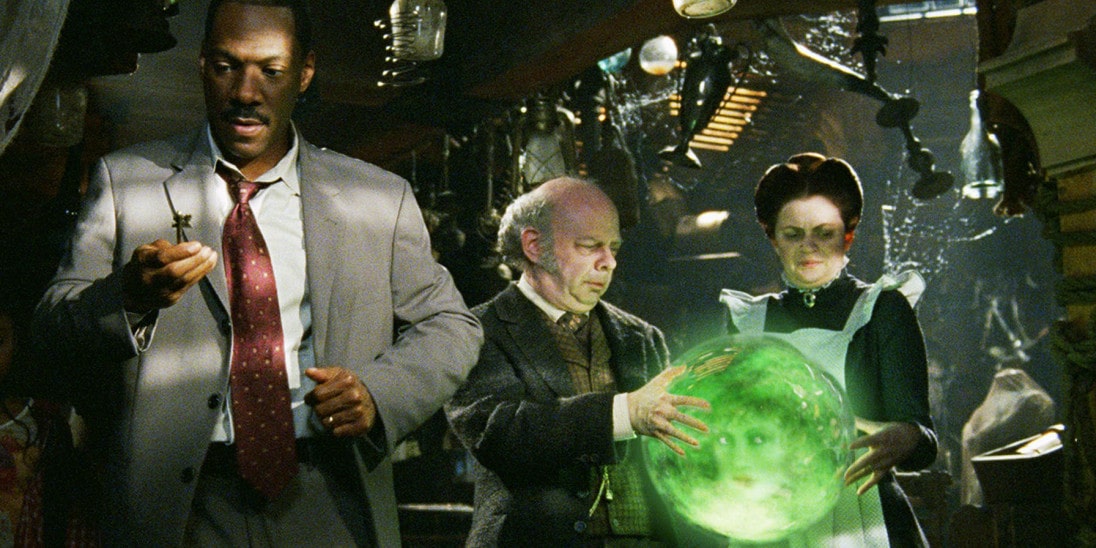
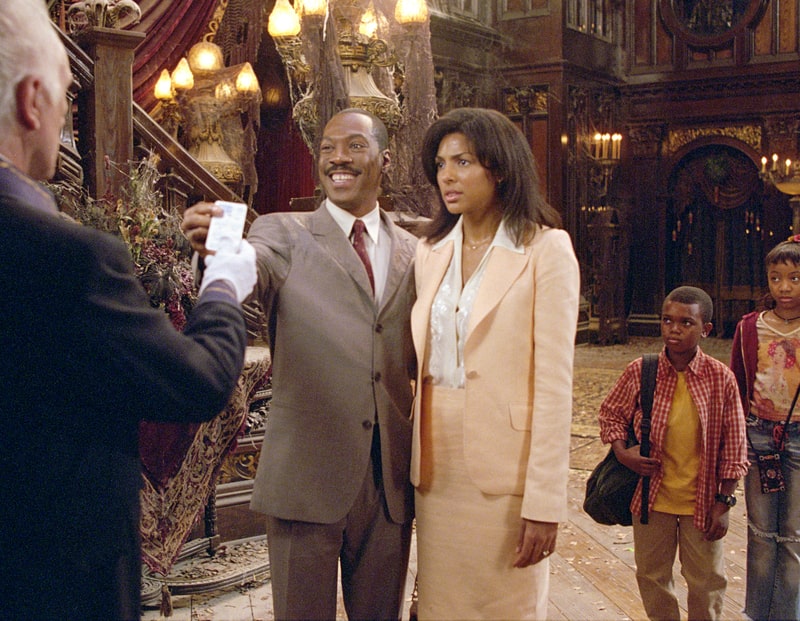
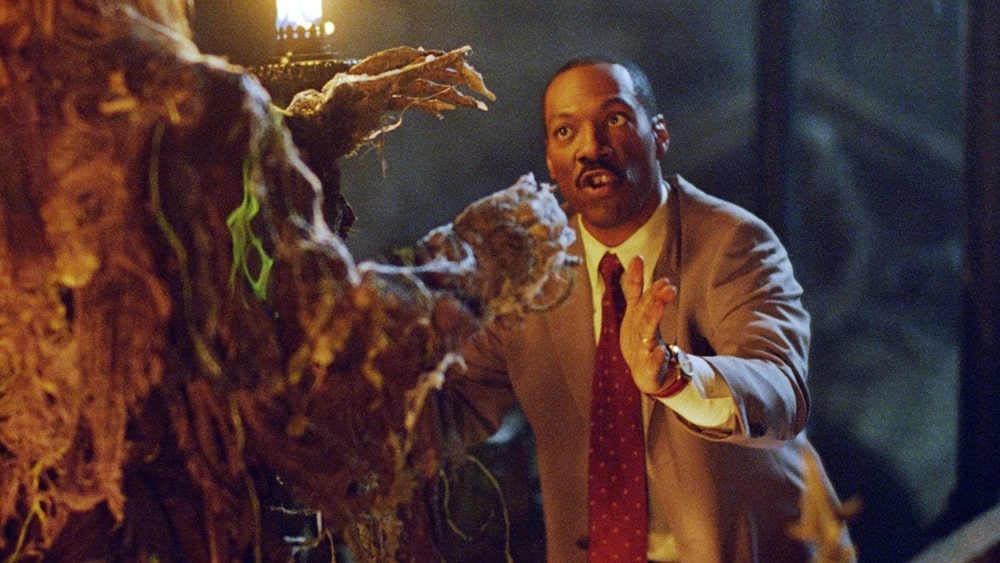
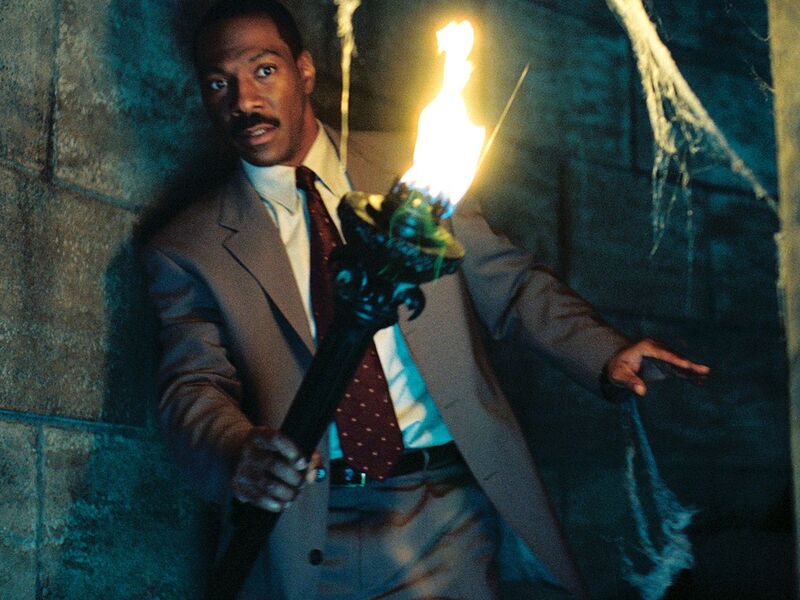
An engaging, cogent and very smart review! A fun read that educates even as it piques one’s curiosity. (Perhaps the film is worth a second look . . .) Bravo!
Thank you! If you watch it again, I hope you’ll come back and tell us what you think of it!